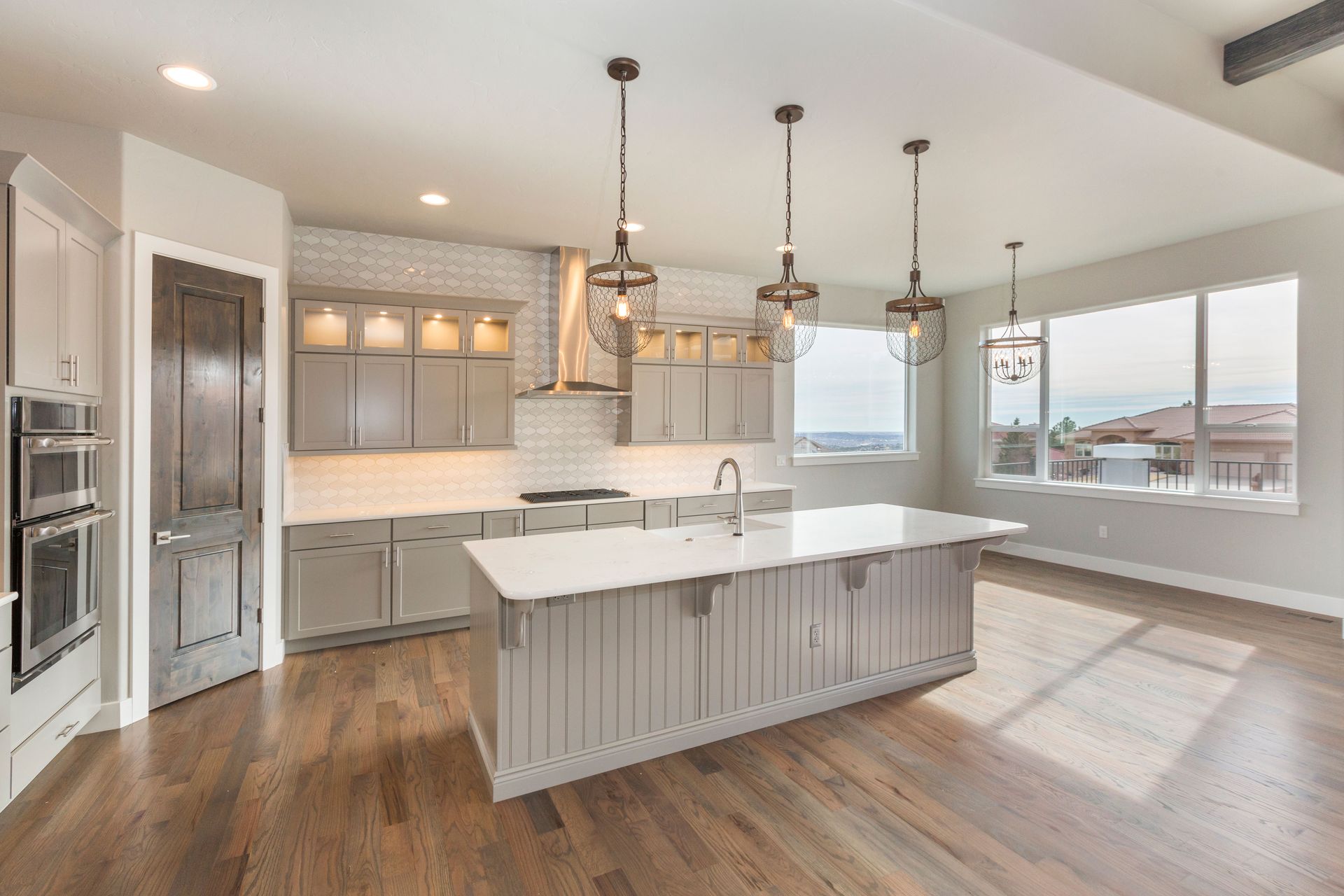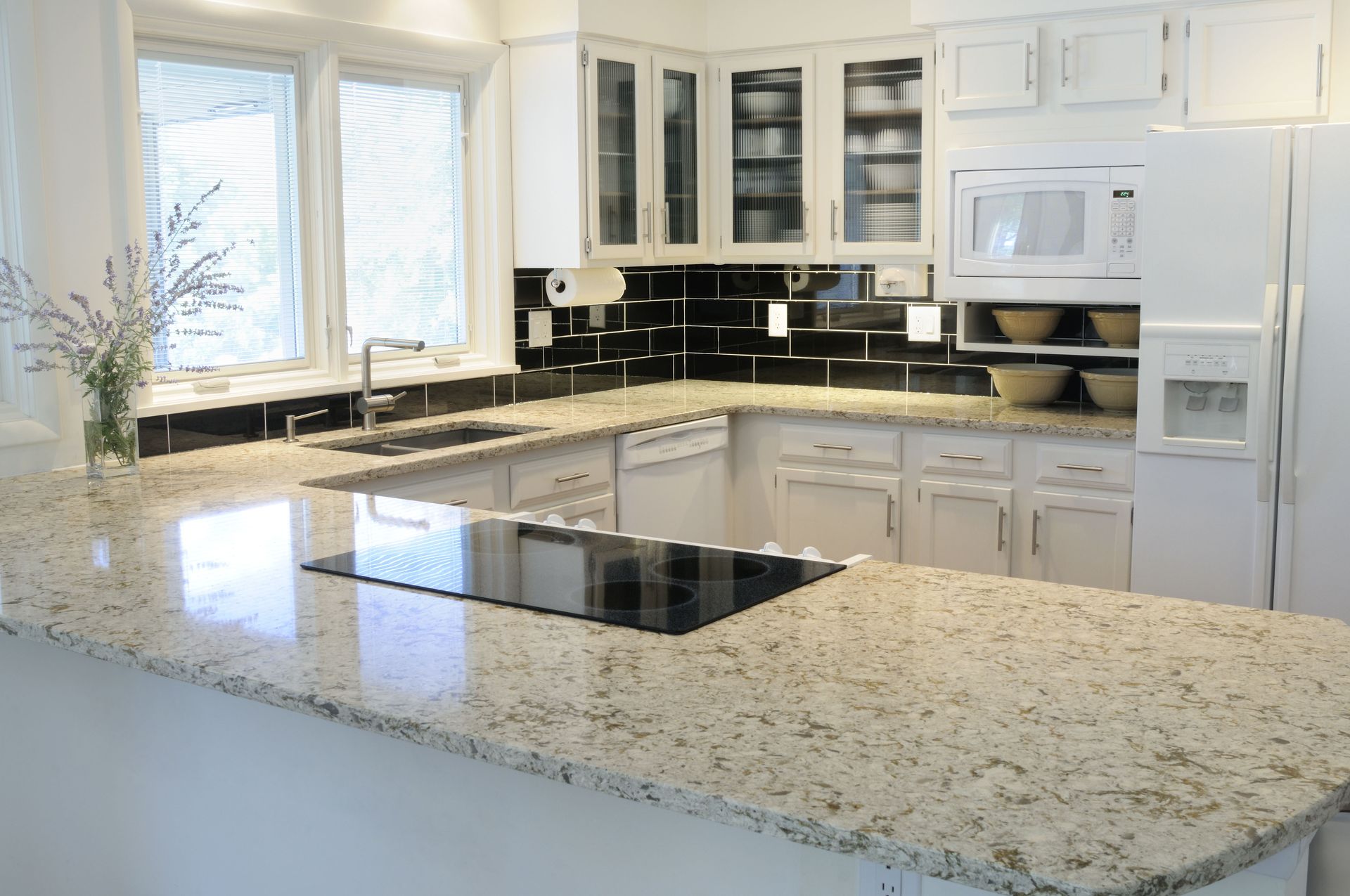September 9, 2025
The modern homeowner is increasingly conscious of their environmental footprint, resulting in a rise in sustainable kitchen remodels. These remodels not only reduce environmental impact but also often lead to cost savings, improved indoor air quality, and a healthier living environment. Sustainable kitchen design involves thoughtful selection of materials, appliances, and layouts, all aligned with eco-friendly principles. The ripple effects extend beyond individual homes, contributing to broader environmental conservation efforts. As kitchens continue to serve as the heart of the home, integrating sustainability reflects a commitment to both personal well-being and the planet.
Sustainable Materials and Appliances
Incorporating sustainable materials is central to modern kitchen design. Recycled materials like reclaimed wood and recycled glass tiles combine aesthetic appeal with environmental responsibility. Reclaimed wood brings character and history while reducing carbon emissions compared to new hardwood. Recycled glass tiles provide vibrant colors while diverting waste from landfills, supporting a circular economy. Low-emission finishes are another critical consideration, as traditional paints and sealants often contain volatile organic compounds (VOCs) that impact indoor air quality. Low-VOC options ensure a safe and beautiful kitchen without compromising environmental standards.
Bamboo and cork are rapidly renewable alternatives that offer durability and low maintenance. Bamboo matures in just a few years, and cork is harvested without harming trees, making both excellent choices for countertops, flooring, and cabinetry. Using locally sourced materials further reduces the carbon footprint of kitchen remodels, minimizes energy use for transportation, and supports regional economies. Durability is also key—high-quality materials reduce the need for frequent replacements, aligning long-term savings with sustainability goals.
Energy-efficient appliances are equally essential. Energy Star-rated appliances reduce electricity and water usage, translating to lower utility bills and environmental impact. Water-saving fixtures, such as low-flow faucets and efficient dishwashers, help conserve resources without compromising functionality. Smart technologies, including intelligent lighting and connected appliances, allow homeowners to optimize energy and water use while enhancing convenience. Induction cooktops, which heat cookware directly through electromagnetic fields, improve energy efficiency and indoor air quality. Renewable energy solutions, such as solar panels, further reduce reliance on nonrenewable electricity, making the kitchen a hub of eco-conscious living.
Eco-Design and Waste Reduction
Sustainable kitchen design also encompasses thoughtful layouts and eco-friendly practices. Maximizing natural light through windows and skylights reduces the need for artificial lighting while creating inviting spaces. Efficient layouts, multi-functional features, and effective storage solutions reduce material use and food waste, supporting zero-waste principles. Proper ventilation ensures healthy indoor air quality while conserving energy, and adaptable spaces allow homeowners to modify their kitchens over time, reducing the need for future remodels.
Waste reduction is a vital component of sustainable design. Deconstruction, instead of demolition, allows materials like cabinets, countertops, and fixtures to be reused or recycled, reducing landfill contributions and potentially offering tax incentives. Composting systems integrated into kitchen spaces manage organic waste, turning scraps into valuable garden compost. Efficient storage keeps food visible and organized, helping households minimize spoilage. Water conservation is also critical, gray water systems, rainwater harvesting, low-flow plumbing fixtures, and drip irrigation for indoor plants all contribute to responsible water use, while regular maintenance and leak detection ensure systems remain efficient over time.
Healthy and Sustainable Kitchen Practices
Sustainable kitchen design is not just about materials and appliances—it also involves daily habits that reduce environmental impact and promote health. Incorporating practices like mindful food sourcing, reducing single-use plastics, and prioritizing seasonal, local ingredients helps homeowners align their lifestyle with eco-friendly principles. Using non-toxic cookware, storing food in reusable containers, and minimizing chemical cleaners further enhances both health and sustainability. Additionally, meal planning and proper food storage can reduce waste, while composting organic scraps provides a natural nutrient source for gardens. By integrating these practices into everyday routines, homeowners ensure their sustainable kitchen design is supported by conscious, health-focused living.
Sustainable Lighting Solutions
Lighting is a key but often overlooked element of sustainable kitchen design, impacting both energy use and the space’s atmosphere. Thoughtful placement and intensity of lights, combined with energy-efficient fixtures and natural daylight, can reduce waste while enhancing usability and comfort. With smart lighting strategies, a kitchen can feel bright, inviting, and environmentally responsible at the same time.
Integrating natural light strategies into the kitchen further enhances sustainability. Skylights, clerestory windows, and strategically placed larger windows can flood the space with daylight, reducing the need for artificial lighting during peak hours. South-facing windows or light wells can maximize sunlight exposure, while frosted or diffused glass maintains privacy without sacrificing illumination. Thoughtful design ensures that daylight is evenly distributed, reducing dark spots and creating a warm, inviting atmosphere that enhances both functionality and mood.
Advanced lighting technologies like motion sensors, dimmers, and smart controls optimize energy usage by ensuring lights operate only when necessary. Motion sensors automatically turn off lights when a space is unoccupied, which is particularly useful in larger kitchens or open-concept layouts. Dimmers allow homeowners to adjust brightness according to the time of day, activity, or desired ambiance, providing flexibility while conserving electricity. Smart lighting systems can even be programmed to sync with daylight patterns, further reducing unnecessary energy consumption.
Material Innovation and Eco-Friendly Trends
Innovation in materials continues to reshape sustainable kitchen design. Biodegradable composites, recycled countertops, and plant-based laminates are becoming increasingly popular, offering eco-conscious alternatives without sacrificing style or durability. Innovations in smart surfaces that resist staining or reduce the need for harsh cleaning chemicals further minimize environmental impact. Additionally, trend-driven eco-friendly solutions such as modular cabinetry, reclaimed metal accents, and recycled concrete flooring allow homeowners to combine aesthetics with sustainability. These forward-thinking materials reflect an ongoing commitment to reducing environmental impact while pushing the boundaries of kitchen design.
Certifications, Standards, and Long-Term Sustainability
To ensure truly sustainable kitchens, homeowners can consider certifications and standards. LEED (Leadership in Energy and Environmental Design) certification evaluates energy efficiency, water usage, material selection, and indoor environmental quality. Green building standards, such as the National Green Building Standard and passive house principles, provide guidance for comprehensive eco-conscious design. Environmental Product Declarations (EPDs) offer transparency about materials’ lifecycle impacts, while FSC-certified wood guarantees responsible forest management. Complying with local sustainability regulations can offer additional benefits, such as incentives and rebates, while supporting community environmental goals.
Together, these measures ensure that a sustainable kitchen remodel is not only environmentally responsible but also practical, efficient, and long-lasting. From choosing durable materials to integrating energy-efficient appliances, incorporating smart technologies, and planning layouts for adaptability, homeowners can create kitchens that are functional, beautiful, and eco-conscious. According to Houzz, as the 2025 US Kitchen Trends Study demonstrates, the majority of homeowners are already embracing sustainable options, signaling a cultural shift toward environmentally responsible home design.
Sustainability has become a central focus in modern kitchen design. By selecting recycled, locally sourced, and durable materials; integrating energy- and water-efficient appliances; optimizing layouts; and reducing waste, homeowners are creating kitchens that benefit both their families and the planet. The adoption of sustainable practices in kitchen remodels is not just a trend; it is a long-term commitment to environmental responsibility, efficiency, and quality of life.
Now is the perfect time to plan your sustainable kitchen remodel. Whether updating appliances, choosing low-emission finishes, or incorporating renewable energy, every choice contributes to a greener future. Work with kitchen design professionals today at Seasons Interiors to explore solutions that blend style, function, and sustainability. Your dream kitchen can be beautiful, functional, and eco-friendly.


